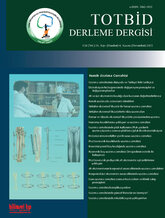
Humeral lengthening surgery, which was initially performed predominantly for cosmetic reasons, has gained increasing importance for functional indications in recent years. As the humerus is a non-weight bearing bone, functional impairments are often less apparent compared to the lower extremities; nevertheless, in cases of severe shortening, considerable limitations in daily activities may occur. In skeletal dysplasia such as achondroplasia, humeral lengthening has been increasingly employed to facilitate genital hygiene, improve reach, and restore body proportions. Lengthening procedures are carried out according to the principles of Ilizarov, using either external fixators or motorized intramedullary nails. External fixators provide the advantage of achieving greater lengthening, whereas motorized nails are associated with lower complication rates. One of the most common complications is radial nerve palsy, which is usually transient. The average lengthening achieved ranges from 5 to 9 cm, with functional recovery occurring more rapidly than in the lower extremities. Overall, humerus lengthening represents an effective intervention that enhances quality of life, self-confidence, and participation in daily activities.